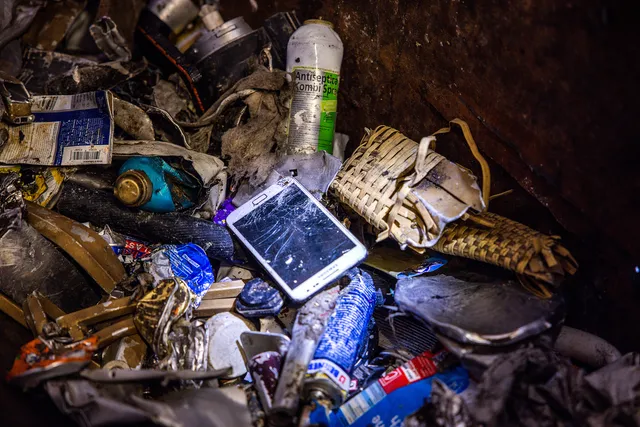Rechargeable batteries could lead to more forever chemicals in the environment, study finds.
Rechargeable lithium-ion batteries used in everyday gadgets, electric vehicles, and to store renewable energy could be a growing source of the “forever chemicals” that pollute soil and waterways, new research suggests.
“Forever chemicals” encompass thousands of different kinds of per- and polyfluoroalkyl substances (PFAS). For decades, they’ve been used to make products more resistant to water, stains, and heat. More recently, a particular subclass of PFAS called bis-perfluoroalkyl sulfonimides (bis-FASIs) has been used as electrolytes and binders in lithium-ion batteries.
Those bis-FASIs are now showing up in soil, sediment, water, and snow surrounding manufacturing facilities, according to research published yesterday in the journal Nature Communications. The study authors also found bis-FASIs in liquids that leached from landfills.
Taken together, it points to lithium-ion batteries as a potential vector for forever chemical pollution from cradle to grave. Without taking action, it’s a problem that could grow as more pieces of our lives become all-electric — from cars to homes and buildings.
“It’s definitely not intended to be anti-clean or sustainable energy … It’s really meant to highlight, ‘Hey, let’s include environmental risk assessments of the things that we’re using in this infrastructure,’” says lead author Jennifer Guelfo, an assistant professor of environmental engineering at Texas Tech University.
“It’s basically a starting point. And what I hope is that it leads to more attention to these compounds and others like them in applications that are emerging in both clean energy as well as consumer electronics,” adds P. Lee Ferguson, another study author and an associate professor of civil and environmental engineering at Duke University.
The researchers took water, sediment, and soil samples from 87 different locations in Minnesota, Kentucky, Belgium, and France between January and October 2022 — targeting areas near forever chemical manufacturers including 3M and Arkema, among others. They found concentrations of bis-FASIs in the parts per billion (ppb) common near manufacturing facilities. “You don’t just find that out there typically as like background concentration,” Guelfo says. “Parts per billion is usually something that’s associated with some form of impact.”
For comparison, that’s less PFAS contamination than you might find in the environment from a release of fire-fighting foam, according to Guelfo. PFAS levels might be in the parts per million in that scenario, about a thousand times higher than the bis-FASI concentrations Guelfo and her colleagues typically found near manufacturers. But the contamination they documented is still orders of magnitude higher than limits the Environmental Protection Agency set this year for other kinds of PFAS in drinking water. The agency’s limit is four parts per trillion for two of the most common types of forever chemicals.
There aren’t any federal regulations yet for bis-FASIs in particular, which haven’t been used as ubiquitously as other kinds of PFAS for as long. Because PFAS has been used in everything from nonstick pans to food packaging, fabric protectors, and dental floss — certain types of PFAS have likely already entered most Americans’ bloodstreams.



Leave feedback about this